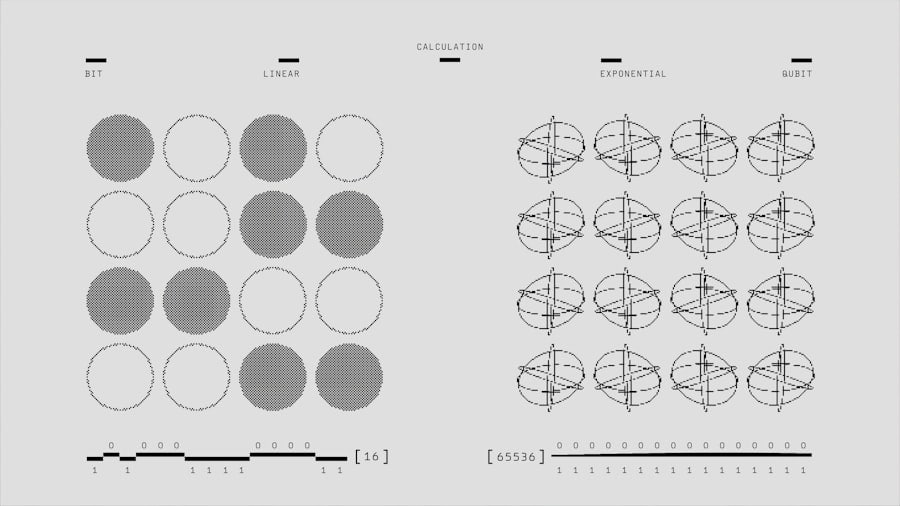Fully connected neural networks, also known as dense neural networks, are a fundamental concept in artificial intelligence and machine learning. These networks are designed to emulate the human brain’s information processing, making them effective for solving complex problems and generating predictions. The core principle of fully connected neural networks involves creating a network of interconnected nodes, or neurons, that collaborate to process input data and produce an output.
Each neuron in the network is connected to every other neuron, hence the term “fully connected.” This comprehensive connectivity enables the network to learn from input data and make decisions based on that learning. In recent years, fully connected neural networks have gained prominence due to their capacity to handle large datasets and perform complex tasks such as image recognition, natural language processing, and predictive analytics. These networks have transformed various industries, including healthcare, finance, and manufacturing, by enabling machines to perform tasks previously thought to be exclusive to human intelligence.
As artificial intelligence continues to advance, fully connected neural networks are expected to play a significant role in shaping the future of technology and innovation.
Key Takeaways
- Fully connected neural networks are a type of artificial neural network where each neuron is connected to every neuron in the adjacent layers.
- The structure of fully connected neural networks consists of an input layer, one or more hidden layers, and an output layer, with each layer containing multiple neurons.
- Fully connected neural networks are used in AI for tasks such as image and speech recognition, natural language processing, and decision making.
- Training and learning in fully connected neural networks involve adjusting the weights and biases of the connections between neurons to minimize the difference between the predicted and actual outputs.
- Advantages of fully connected neural networks include their ability to learn complex patterns, but they also have limitations such as high computational requirements and susceptibility to overfitting.
The Structure of Fully Connected Neural Networks
The structure of a fully connected neural network consists of multiple layers of neurons, each layer performing a specific function in the data processing pipeline. The first layer, known as the input layer, receives the raw input data and passes it on to the next layer for processing. The subsequent layers, called hidden layers, perform complex mathematical operations on the input data to extract meaningful patterns and features.
Finally, the output layer produces the final result or prediction based on the processed data. Each neuron in a fully connected neural network is connected to every neuron in the adjacent layers through weighted connections. These weights determine the strength of the connection between neurons and play a crucial role in the learning process of the network.
During training, the network adjusts these weights based on the input data and the desired output, allowing it to learn from experience and improve its performance over time. The structure of fully connected neural networks can vary in terms of the number of layers, the number of neurons in each layer, and the activation functions used to process the data. These variations allow for flexibility in designing networks that are tailored to specific tasks and datasets, making fully connected neural networks a versatile tool for solving a wide range of problems.
The Function of Fully Connected Neural Networks in AI

Fully connected neural networks serve as the backbone of many artificial intelligence applications, performing essential functions such as pattern recognition, classification, regression, and decision-making. These networks are capable of learning complex relationships within data and making predictions based on that learning, making them invaluable for tasks such as image and speech recognition, natural language processing, and financial forecasting. One of the key functions of fully connected neural networks is their ability to extract meaningful features from raw input data.
This feature extraction process allows the network to identify patterns and relationships within the data that may not be apparent to human observers. By learning from large amounts of labeled data, fully connected neural networks can generalize their knowledge and make accurate predictions on new, unseen data. Another important function of fully connected neural networks is their ability to adapt and learn from experience.
Through a process known as backpropagation, these networks can adjust their internal parameters based on feedback from the environment, allowing them to improve their performance over time. This adaptive learning capability makes fully connected neural networks well-suited for dynamic and unpredictable environments, where traditional rule-based systems may struggle to perform effectively.
Training and Learning in Fully Connected Neural Networks
| Metrics | Value |
|---|---|
| Training Accuracy | 85% |
| Validation Accuracy | 80% |
| Learning Rate | 0.001 |
| Training Time | 6 hours |
Training a fully connected neural network involves presenting it with a large dataset of labeled examples and adjusting its internal parameters, such as weights and biases, to minimize the difference between its predictions and the true labels. This process is typically done using an optimization algorithm such as gradient descent, which iteratively updates the network’s parameters to minimize a predefined loss function. During training, the network learns to recognize patterns and relationships within the input data by adjusting its internal parameters based on the error between its predictions and the true labels.
This process is repeated over multiple iterations until the network’s performance reaches a satisfactory level. Once trained, the network can make predictions on new, unseen data by applying the learned patterns and relationships to the input. The learning process in fully connected neural networks is facilitated by the use of activation functions, which introduce non-linearities into the network’s computations.
These non-linearities allow the network to learn complex relationships within the data and make more accurate predictions. Additionally, techniques such as regularization and dropout can be used to prevent overfitting and improve the generalization capabilities of the network.
Advantages and Limitations of Fully Connected Neural Networks
Fully connected neural networks offer several advantages that make them well-suited for a wide range of AI applications. One of their key strengths is their ability to learn complex relationships within data and make accurate predictions based on that learning. This makes them particularly effective for tasks such as image recognition, natural language processing, and predictive analytics.
Another advantage of fully connected neural networks is their flexibility in handling different types of data and tasks. By adjusting the number of layers, neurons, and activation functions, these networks can be tailored to specific problems and datasets, making them a versatile tool for solving a wide range of challenges. However, fully connected neural networks also have some limitations that should be considered when using them for AI applications.
One limitation is their computational complexity, especially when dealing with large datasets or deep architectures. Training and running fully connected neural networks can be resource-intensive, requiring powerful hardware and significant computational resources. Another limitation is their susceptibility to overfitting, especially when dealing with high-dimensional or noisy data.
Overfitting occurs when a network learns to memorize specific examples from the training data rather than generalizing its knowledge to new examples. Techniques such as regularization and dropout can help mitigate this issue, but it remains a challenge in many practical applications.
Applications of Fully Connected Neural Networks in AI

Fully connected neural networks have found widespread applications in various fields of artificial intelligence, revolutionizing industries and enabling new capabilities in technology. In healthcare, these networks are used for medical image analysis, disease diagnosis, and drug discovery, where they can learn from large datasets of medical images and patient records to make accurate predictions and assist healthcare professionals in decision-making. In finance, fully connected neural networks are used for fraud detection, risk assessment, and algorithmic trading, where they can analyze large volumes of financial data to identify patterns and anomalies that may indicate fraudulent activities or market trends.
In manufacturing, these networks are used for quality control, predictive maintenance, and supply chain optimization, where they can learn from sensor data and production records to improve efficiency and reduce costs. In addition to these applications, fully connected neural networks are also used in natural language processing for tasks such as sentiment analysis, language translation, and chatbot development. They are also used in autonomous vehicles for perception tasks such as object detection and scene understanding.
As technology continues to advance, fully connected neural networks are expected to find even more applications in areas such as robotics, virtual reality, and personalized medicine.
Future Developments in Fully Connected Neural Networks
The field of fully connected neural networks is constantly evolving, with ongoing research and development aimed at improving their capabilities and addressing their limitations. One area of future development is the design of more efficient architectures that can handle larger datasets and deeper networks while minimizing computational resources. This includes exploring new activation functions, regularization techniques, and optimization algorithms that can improve training efficiency and generalization capabilities.
Another area of future development is the integration of fully connected neural networks with other types of neural network architectures, such as convolutional neural networks (CNNs) for image processing or recurrent neural networks (RNNs) for sequential data analysis. By combining different types of architectures, researchers hope to create more powerful and versatile models that can handle a wider range of tasks and datasets. Furthermore, future developments in fully connected neural networks will focus on improving their interpretability and explainability.
As these networks are often considered “black boxes” due to their complex internal workings, efforts are being made to develop techniques that can provide insights into how they make decisions and predictions. This includes methods for visualizing internal representations, identifying important features in the input data, and understanding how different parts of the network contribute to its overall behavior. In conclusion, fully connected neural networks are a foundational concept in artificial intelligence with widespread applications across various industries.
Their ability to learn from data and make predictions has revolutionized many fields, from healthcare to finance to manufacturing. While they offer several advantages, such as flexibility and powerful learning capabilities, they also have limitations that need to be addressed through ongoing research and development. As technology continues to advance, fully connected neural networks are expected to play an increasingly important role in shaping the future of AI and innovation.
For those interested in exploring the intricacies of fully connected neural networks and their applications in various technological domains, a related article that delves into the broader context of digital ecosystems, including AI technologies, can be found at Metaversum. Specifically, the article titled “Metaverse Platforms and Ecosystems: Overview of Major Metaverse Platforms” provides insights into how these advanced neural networks could be integrated into larger digital platforms. You can read more about this topic and its implications for the future of digital interactions by visiting Metaverse Platforms and Ecosystems: Overview of Major Metaverse Platforms. This article is a great resource for understanding the potential intersections between neural network technologies and expansive digital environments.
FAQs
What is a fully connected neural network?
A fully connected neural network, also known as a dense neural network, is a type of artificial neural network where each neuron in one layer is connected to every neuron in the next layer.
How does a fully connected neural network work?
In a fully connected neural network, each neuron in a layer is connected to every neuron in the subsequent layer. This allows for complex relationships to be learned between input and output data.
What are the advantages of a fully connected neural network?
Fully connected neural networks are capable of learning complex patterns and relationships in data, making them suitable for a wide range of tasks such as image and speech recognition, natural language processing, and more.
What are the limitations of a fully connected neural network?
One limitation of fully connected neural networks is that they can be computationally expensive, especially as the number of neurons and layers increases. Additionally, they may be prone to overfitting if not properly regularized.
What are some applications of fully connected neural networks?
Fully connected neural networks are used in a variety of applications, including image and speech recognition, natural language processing, financial forecasting, and many other fields where complex pattern recognition is required.

Leave a Reply